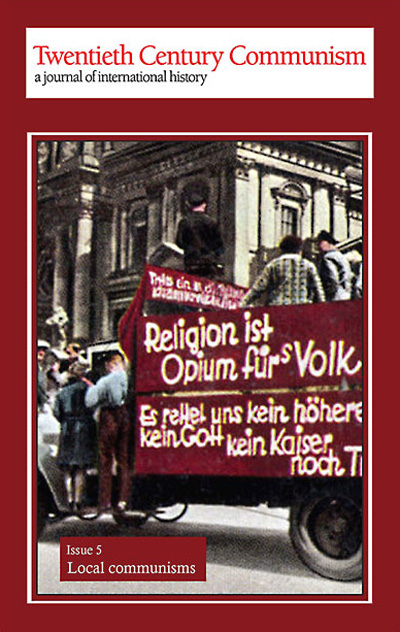
Introduction: Local communisms within a global movement
Twentieth Century Communism - Print ISSN 1758-6437 - Online ISSN 2978-1329
Volume 2013 Number 5
Introduction: Local communisms within a global movement
Norman LaPorte
Abstract
Reviewing the impact of the then recently available archival sources on research into the German Communist Party (KPD), Sigrid Koch-Baumgarten observed that the quintessential question for researchers – the balance between exogenous and endog- enous factors in shaping communism – was here to stay.1 This is a question which has been framed in a number of ways, but in one form or another it is embedded across the varying national historiographies of a transnational movement.2 The contributions to this issue of Twentieth Century Communism – which draws on a selection of papers presented to a conference at the University of Glamorgan (2011) – explore the relationship between the universalising intentions of Bolshevism and the prism of local conditions, which fragmented the light from the East to produce a spectrum of communisms.3 Each author places the balance – as Koch-Baumgarten termed it – at a different point on the scales in weighing up these exogenous and endogenous influences; but they all, to one extent or another, point towards many shades of ‘red’, as a diversity of specific ‘local’ factors reacted with the Soviet-issue pigment.
-
Sigrid Koch-Baumgarten, ‘Eine Wende in der Geschichtsschreibung der KPD?’, in International wissenschaftliche Korrespondenz zur Geschichte der Arbeiterbewegung, 46, 1, 1998, pp82-89.
-
For the British example, see John Callaghan, ‘Review Article: National and International Dimension of British Communist History’, in Journal of Communist Studies and Transition Politics, 24, 3, 2008, pp456-72.
-
Thanks are due here the Fiona Reid and Lois Thomas for their role in co-organising the conference.
To cite this article
Norman LaPorte (2013) Introduction: Local communisms within a global movement, Twentieth Century Communism, 2013(5)
